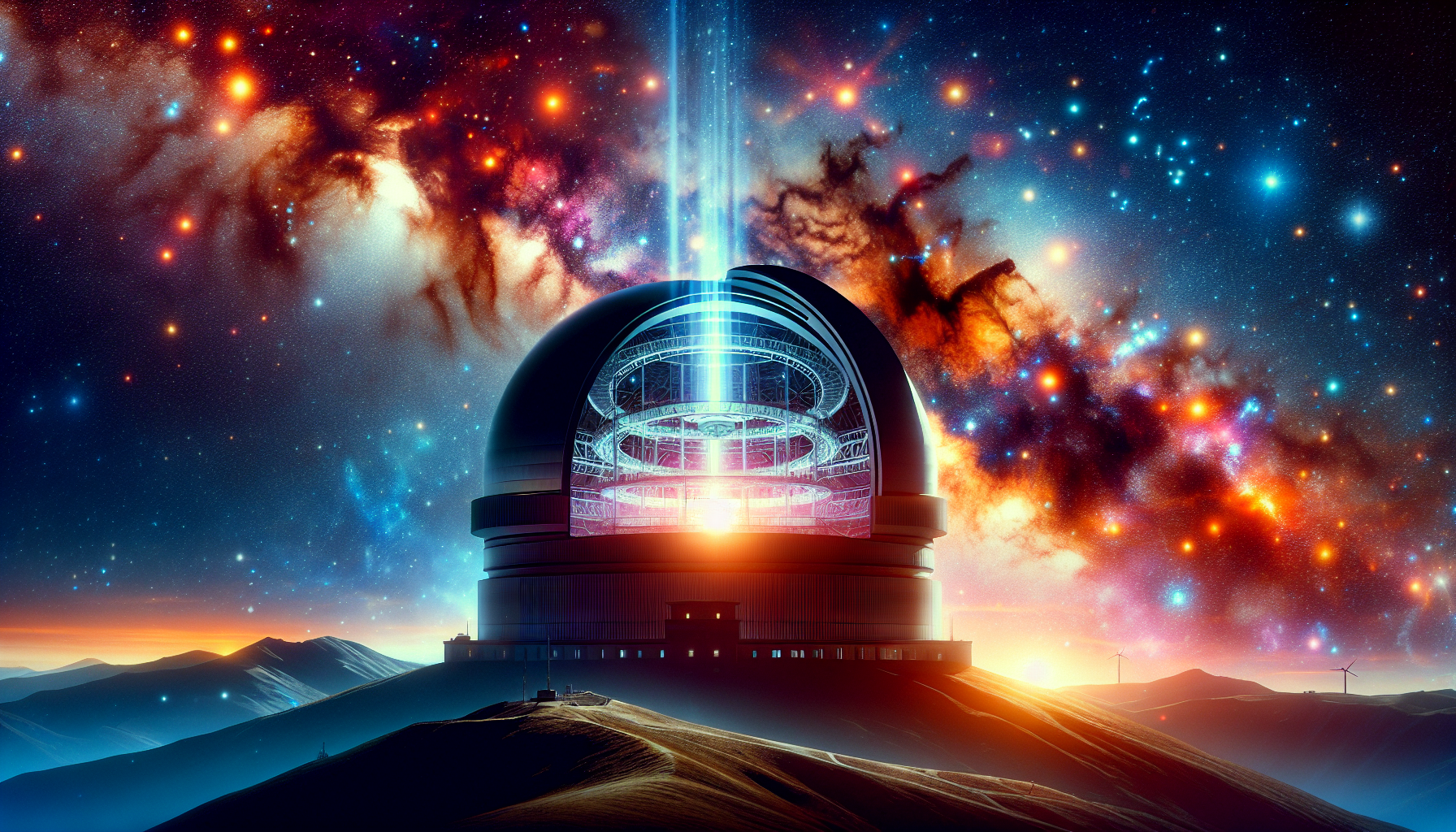Title: Gazing into Infinity: How the Vera C. Rubin Observatory is Redefining Our Place in the Universe
Dear Explorers of the Cosmos,
Every once in a while, a development in technology sweeps the veil off the hidden corners of our universe and leaves us peering in awe at the marvels beyond. The Vera C. Rubin Observatory in Chile is one such wonder—a quiet colossus standing sentinel in the Andes, poised to forever transform our understanding of the cosmos. And in its very first act, it has delivered breathtaking images that challenge our perception of where we stand in the universe.
What does this mean for us, not just scientifically, but existentially? Let’s embark on this journey to the stars and back home.
Peering into the Birthplaces of Stars
On June 23, 2025, a historic image unfurled from the observatory showcasing the Trifid and Lagoon Nebulae, vibrant splashes of pink, blue, and orange gas and dust. These are not mere aesthetic wonders; they are colossal cosmic wombs, star-forming regions that help us decode the lifecycle of stars and, ultimately, the universe.
Located approximately 9,000 light-years away, these nebulae remind us of the universe’s dynamic nature—a continuous dance of destruction and rebirth. What’s remarkable is the Vera Rubin’s unparalleled ability to capture these moments with stunning clarity, courtesy of the world's most powerful digital camera.
In essence, this is not just a photograph; it's a time capsule transporting us to the universe's fiery past, its cyclical narration written in light-years.
A World of Asteroids and Hidden Planets
Beyond their aesthetic allure, the capabilities of the Vera Rubin mirror the pressing concerns of our time—like detecting potential Earth-threatening asteroids. During a mere 10-hour observation, the telescope identified over 2,100 new asteroids and seven celestial bodies hovering close to our planet. With all existing surveys typically uncovering about 20,000 asteroids annually, the Rubin promises a revolution in planetary defense.
Let’s talk about Planet Nine, the elusive celestial body hypothesized to exist in the dark outskirts of our solar system. The Vera Rubin’s sharp gaze promises to unearth this mystery, expanding our celestial map in ways unimaginable before.
This constant survey of the night sky for the next decade holds the promise of new cosmic discoveries—each observation a potential page-turner in the story of our solar system.
Illuminating Europe’s Cosmic Connection
With the United Kingdom serving as a key partner, hosting numerous data centers for storing the Rubin's colossal data flow, the observations are not merely observations; they are shared triumphs of scientific collaboration. Each snapshot not only paints a new picture of our universe but also unites us across borders in the pursuit of knowledge.
Professor Catherine Heymans, Astronomer Royal for Scotland, captures this moment poignantly as an endeavor spanning generations—a testament to humanity's relentless quest for discovery and understanding.
The Legacy of Light
The Rubin's Legacy Survey of Space and Time marks one of this generation's greatest astronomical projects, capturing the southern sky every three days for ten years. It’s a reminder that while the universe's light comes from the distant past, our comprehension of it is very much a light of the present, shaped by ongoing discoveries like these.
Ironically, as we peer farther into space and time, we are brought back down to earth, uniting under a single sky glittering with stars and secrets yet to be unlocked.
What lies ahead?
With each photon captured by the Vera Rubin, we step closer to answering the grandest questions: What is dark matter? How did the universe form? And perhaps the most human of questions: Are we alone in the universe?
The answers, daunting and exhilarating, will provoke introspection not only about our cosmic surroundings but about ourselves, our Earthly systems of knowledge, and our connectivity as a species.
Until next time—may your curiosity light your way.
Yours in stardust and speculation,
A Universe Enthusiast

